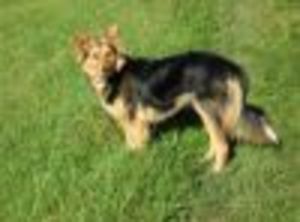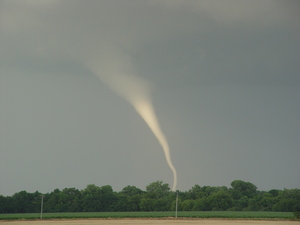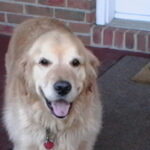Dogs have been helping man to do his work for centuries. Hunting for missing people, injured people, and dead bodies is a talent of a few well-trained canines with dedicated owners.
Tasks. Search and rescue dogs have been used to find people dead or alive after calamities like earthquakes, avalanches, tornadoes, hurricanes, bombings, and floods. Some find missing people; police use others to track criminals.
According to Golden Retriever Rescue, SAR dogs can excel at one or several of six major tasks.
1. A trailing dog must be able to discriminate scents. These are the dogs, like bloodhounds, that can smell an article of clothing and track it to the missing person. The dog must be able to track someone from the point-last-seen (PLS) to the missing person. The dog cannot be thrown off by contamination. He may use ground or air smells over all kinds of surfaces. Some dogs are trained for urban work – pavement and streets — while others work in wilderness areas. These dogs usually work on leash and in a harness.
2. Air-scenting dogs are good for searches when there is no scent article and no PLS. They must locate everyone within a certain sector. They do not need to discriminate scent; just find all humans in an area where the target was last seen, in areas of high probability. They usually work off leash and perpendicular to the wind.
3. A tracking dog must be able to follow the path of a particular person while on harness and leash. This is valuable when a dog is following the most recent scent of “crushed vegetation,” as when tracking a criminal. A few dogs can do this on pavement, but most are not trained to discriminate when the area is cross-contaminated. These dogs can follow a trail when no scent article is available.
4. A disaster dog finds human scent in unnatural environments like the aftermath of tornadoes and earthquakes. These dogs are non-scent discriminating and must be trained to work on unstable footing and in small, confined spaces. They must be agile, obedient, and have lots of stamina. They must be able to follow directional commands and give alerts over long periods of time.
5. Cadaver dogs should be able to find bodies above and below ground, but some train for aboveground only. They are non-scent discriminating dogs that must pass tests to detect tiny pieces of cadavers that have been buried for long amounts of time.
6. Water recovery dogs usually work in boats and must be able to alert when they detect a body in moving currents and general water changes. They are non-scent discriminating.
According to AC’s veteran SAR dog trainer/handler, Vickie Taylor, two other specialties are the “Avalanche dogs,” which can find humans buried in snow, and “Detector dogs” which can track particular scents like narcotics and explosives. Beyond the duties of a regular SAR dog, avalanche dogs must learn to adapt and ride on ski lifts and in helicopters.
Evaluation standards. Dogs must have a certain type of temperament; they must have great stamina and basic obedience. SAR dogs must be non-aggressive around other dogs and people. They must be able to focus on the assigned task and be under the handler’s control at all times.
Which breeds make the best search and rescue dogs? Norma Woolf says even mixed breeds can do well if they have the right temperament and are in peak physical condition. Bloodhounds are notorious for tracking ground scents; Labrador retrievers are wonderful as cadaver dogs because, as an Ohio SAR trainer and dog handler, Gina Flattery, says, “They love things that smell bad.
Other good performers include German shepherds, Belgian Malinois, and Golden Retrievers. A Kentucky SAR group uses Weimaraners, Smooth Collies and Rhodesian Ridgebacks. Southern Ohio uses a Giant Schnauzer and Australian Shepherd, while a Virginia group uses several Border Collies and Australian Shepherds.
Dogs and handlers must work well together — which requires a relationship based on trust. The handlers must know when the dogs are too tired to continue and must reward the dogs with kind words or pats, even when the search must be given up or the result ends with finding human remains.
Criminal tracking dogs usually work in teams with police or someone with firearms. If a SAR team does not have police training, they usually do not get involved with tracking down felons.
Tracking a lost child or someone with Alzheimer’s, lost hikers, and overdue fishermen or hunters usually leads to a live find, which is very rewarding to all involved. However, looking for survivors after a bombing, like that of Oklahoma City, where no survivors were found, can defeat both the dogs and handlers. Many handlers become physically and emotionally exhausted and pass their feelings onto the dogs, which are often retired after a calamity.
Sources:
Vickie Taylor, Hairy Heroes: The Different Disciplines of Canine Search and Rescue. http://www.associatedcontent.com/article/5824984/hairy_heroes_the_different_disciplines.html?cat=53. 10-4-10.
Norma Bennett Woolf, editor and writer for Dog Owner’s Guide, “the online magazine for all pet and show dog owners,” copyright Canis Major Publications. Search and Rescue Dogs. Http://www.canismajor.com/dog/srchresc.html. Retrieved 1-4-11.
Norma Bennett Woolf, editor and writer for Dog Owner’s Guide, “the online magazine for all pet and show dog owners,” copyright Canis Major Publications. Parker: Search dog extraordinaire. Http://www.canismajor.com/dog/sandresc.html. Retrieved 1-4-11.
Vicki Wooters, K-9 Handler, Search and Rescue Dogs of PA, Search and Rescue Dogs-Which Dog Does Which Task? January/March 2006 issue of Delaware Valley Golden Retriever Rescue.






